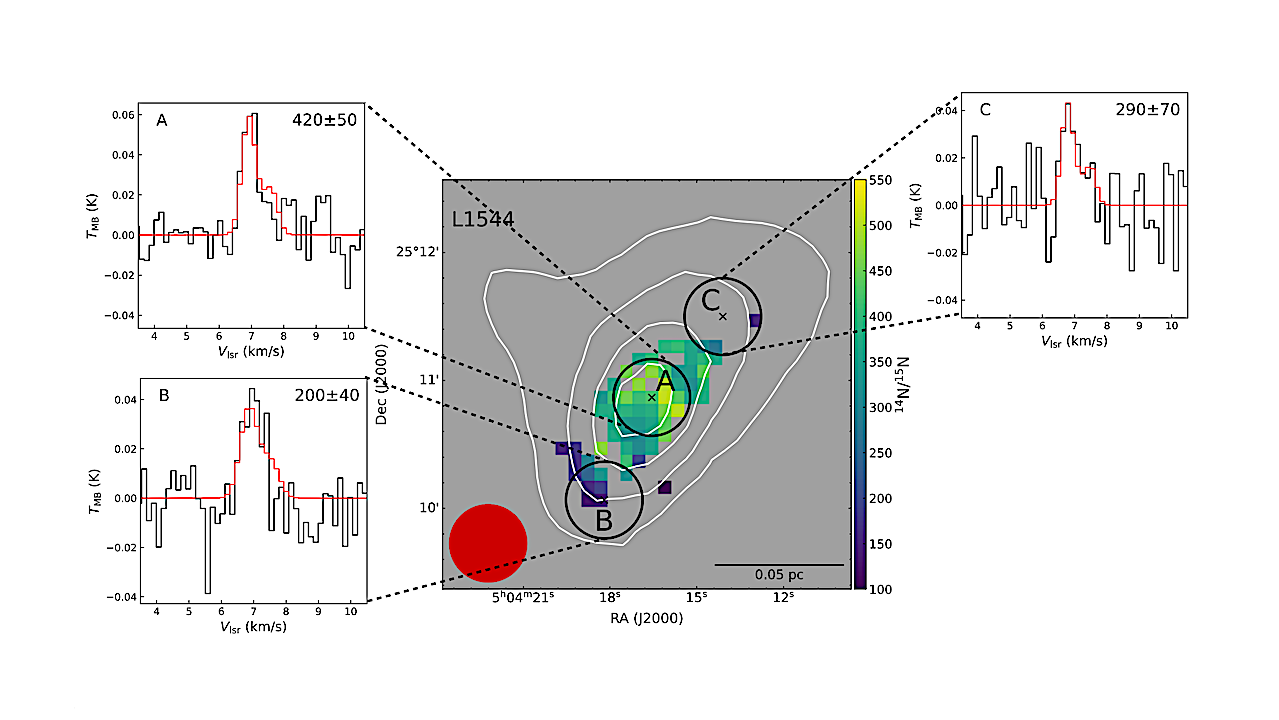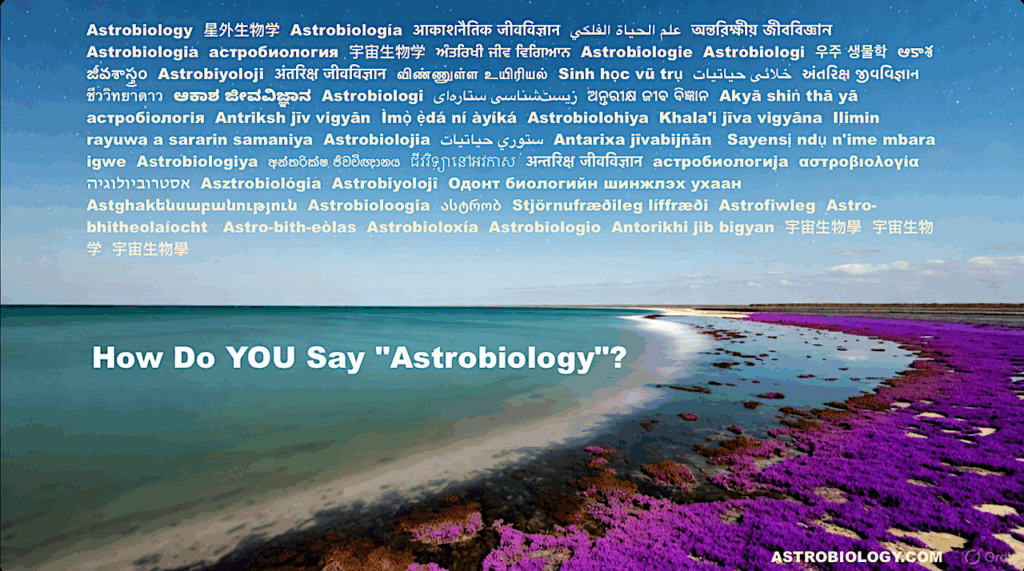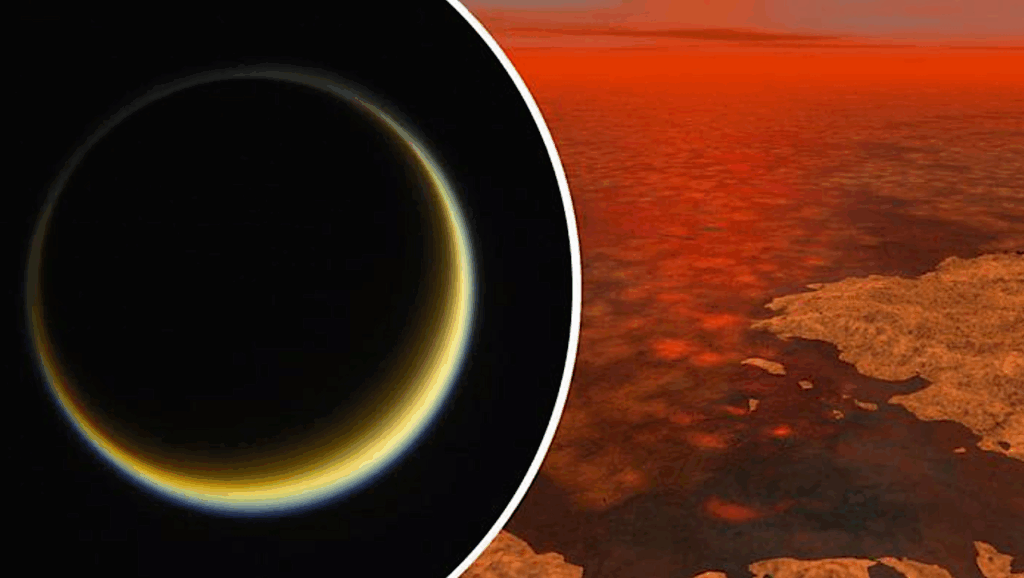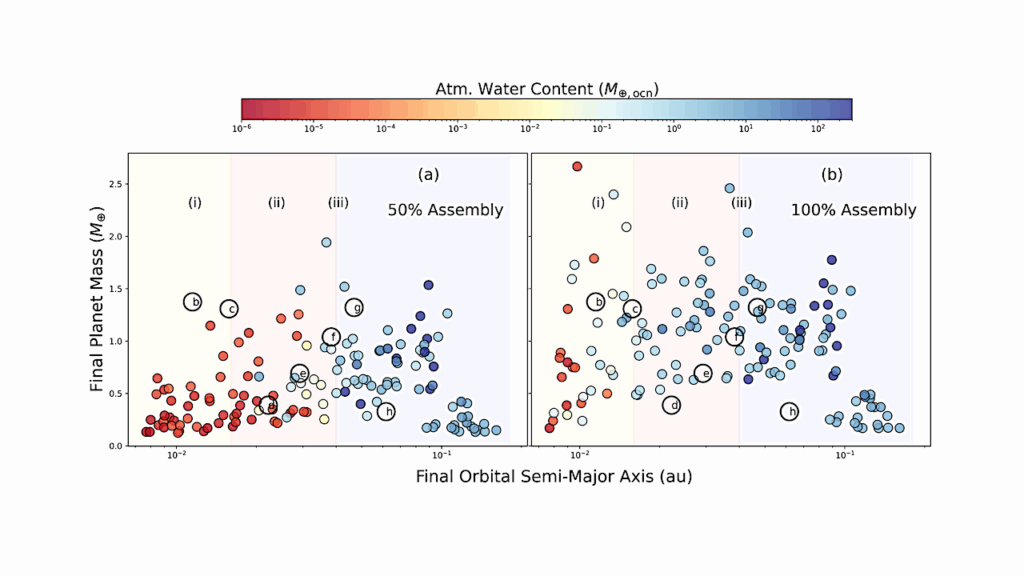Nitrogen Fractionation In Ammonia And Its Insights On Nitrogen Chemistry

Context. Observations of 14N/15N in the interstellar medium are becoming more frequent thanks to the increased telescope capabilities. However, interpreting these data is still puzzling. In particular, measurements of 14N/15N in diazenylium revealed high levels of anti-fractionation in cold cores.
Aims. Furuya & Aikawa (2018), using astrophysical simulations coupled with a gas-grain chemical code, concluded that the 15N-depletion in prestellar cores could be inherited from the initial stages, when 14N15N is selectively photodissociated and 15N atoms deplete onto the dust grain, forming ammonia ices. We aim to test this hypothesis.
Methods. We targeted three sources (the prestellar core L1544, the protostellar envelope IRAS4A, and the shocked region L1157-B1) with distinct degrees of desorption or sputtering of the ammonia ices. We observed the NH3 isotopologues with the GBT, and we inferred the 14N/15N via a spectral fitting of the observed inversion transitions.
Results. 15NH3(1,1) is detected in L1544 and IRAS4A, whilst only upper limits are deduced in L1157-B1. The NH3 isotopic ratio is significantly lower towards the protostar than at the centre of L1544, where it is consistent with the elemental value. We also present the first spatially resolved map of NH3 nitrogen isotopic ratio towards L1544.
Conclusions. Our results are in agreement with the hypothesis that ammonia ices are enriched in 15N, leading to a decrease of the 14N/15N ratio when the ices are sublimated into the gas phase for instance due to the temperature rise in protostellar envelopes. The ammonia 14N/15N value at the centre of L1544 is a factor of 2 lower than that of N2H+, suggesting that the dominant formation pathway is hydrogenation of N atoms on dust grains, followed by non-thermal desorption.
Elena Redaelli, Luca Bizzocchi, Paola Caselli, Jaime E. Pineda
Comments: Accepted for publication in A&A on 29/05/23
Subjects: Astrophysics of Galaxies (astro-ph.GA); Solar and Stellar Astrophysics (astro-ph.SR)
Cite as: arXiv:2305.18289 [astro-ph.GA] (or arXiv:2305.18289v1 [astro-ph.GA] for this version)
Submission history
From: Elena Redaelli
[v1] Mon, 29 May 2023 17:57:25 UTC (324 KB)
https://arxiv.org/abs/2305.18289
Astrobiology, Astrochemistry








